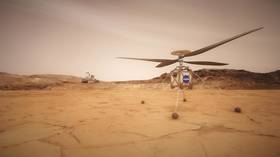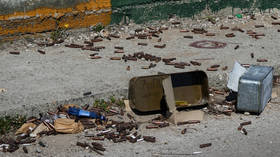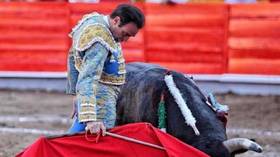Where no chopper has gone before: NASA to send a helicopter to Mars

Not content with rovers, NASA’s next Mars mission will include a helicopter that will be the first human craft to fly around another planet and could potentially pave the way for groundbreaking exploration on Mars and beyond.
The Mars 2020 Rover will land on the Red Planet in early 2021 with a small helicopter on board, to test if it will be able to fly. Until now, the only man-made objects that have visited Mars are rovers, orbiters and landers.
The helicopter mission will last 30 days and will consist of five flights, some of which will simply be hovering tests, just 10 feet off the ground.
Also on rt.com Space herpes? Long missions risk activating virus, NASA warns astronautsShould the first mission be successful, it could open up a whole new world of potential for planetary exploration. Currently, robotic explorers have been limited to the red planet’s surface, and can’t get to every nook and cranny.
“We envision helicopters opening doors to new types of exploration on Mars,” Håvard Grip, flight-control and aerodynamics lead for the Mars Helicopter said. “In the future, we could imagine doing things like regional exploration using multiple helicopters or going to inaccessible areas or biologically sensitive areas using small helicopters.”
Mars has a far thinner atmosphere than Earth, meaning that flying just above the surface is the equivalent of being at 100,000 feet in Earth’s atmosphere. Helicopters usually fly at a max of 10,000 feet.
NASA’s Jet Propulsion Laboratory created an extremely light chopper, weighing just four pounds, with blades that will spin at 3,000 rpm, 10 times faster than most ordinary helicopters. It was approved for the Mars mission in May and will be fitted with solar power batteries, and a heater.
It isn’t just the thin atmosphere that presents a challenge for the chopper, though: the distance between Earth and Mars means there would be a communication delay of at least a few minutes, so the helicopter needs to be able to fly itself and stay in contact with the rover.
Like this story? Share it with a friend!













